NVIDIA Ion – Intel Atom Done Right?
A Closer Look at Ion
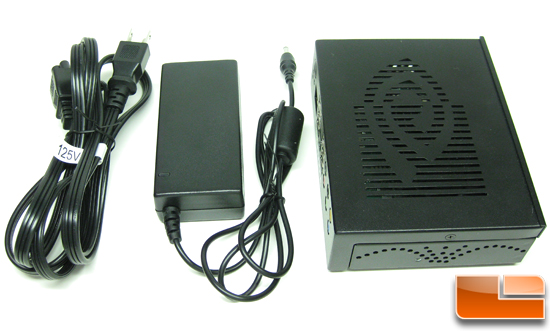
Our NVIDIA Ion came without instructions and any software discs, but included the power adapter and the power cable. Since the reference ION PC doesn’t have an optical drive you’ll have to use an external USB optical drive to install games and applications.
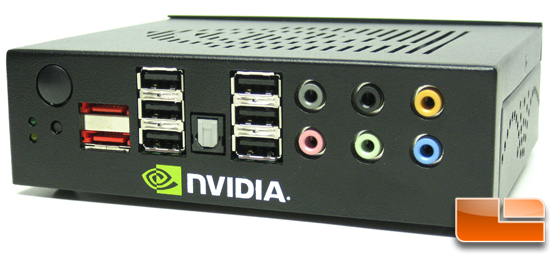
The front of the reference ION PC has six USB 2.0 headers, two eSATA connectors, analog 7.1 audio headers, digital SPDIF, and the power and reset buttons.
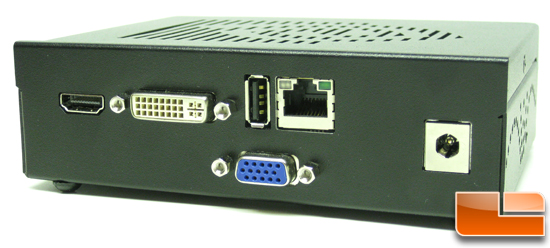
On the back of the reference platform is a gigabit Ethernet port, another USB port, a single dual-link DVI output, HDMI with 7.1 surround sound audio, a VGA output and lastly, the power connector.
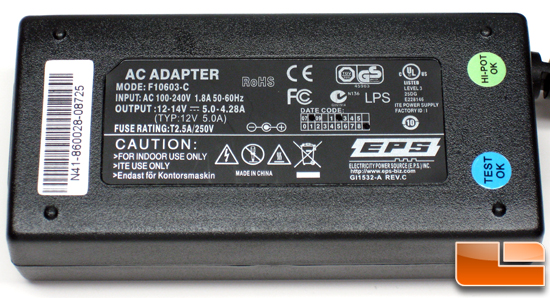
Speaking of power connectors, here is a closer look at the AC Adapter that was included with the Ion reference PC. This is a standard 60W 12V AC Power Adapter that can be found on other platforms like the VIA EPIA Mini-ITX systems. With a rating of 60 Watts this will be more than enough to handle the Ion as you will see when I test power consumption a little later.
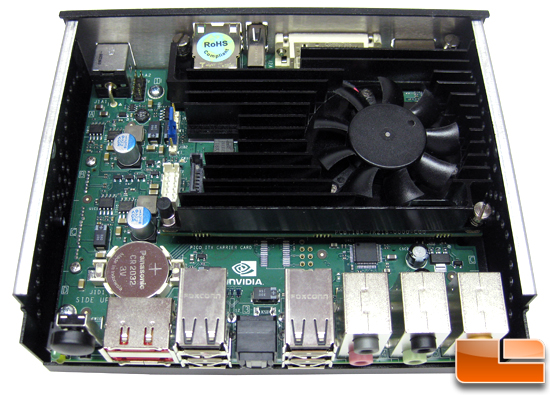
Those of you that are paying close attention might have noticed that the reference platform has input and output devices on both sides of the system. That is because NVIDIA is using a secondary PCB below the Pico-ITX board that is known as the adapter board. This adapter board further expands functionality by adding more real estate to work with.
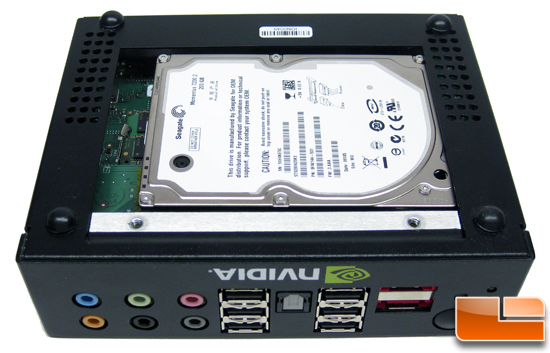
The Ion reference platform uses a standard SATA notebook hard drive back plane, which means that any SATA notebook hard drive or solid state drive will work. The test system I am looking at today came with a 200GB Seagate Momentus 7200.2 hard drive (ST9200420AS). This is a SATA-300 hard drive and should be fairly quick.
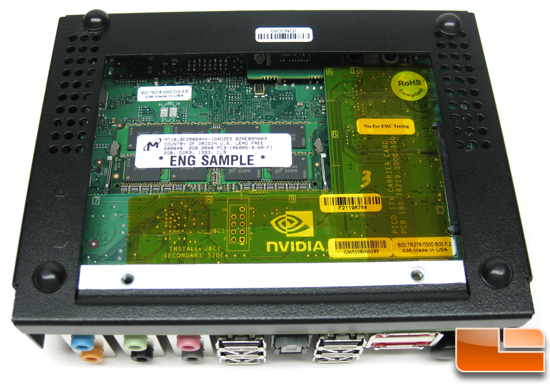
The Ion reference platform uses a single DDR3 SO-DIMM slot that was borrowed from the notebook industry, so this means that the reference system is limited to single channel memory performance. The memory module pictured above is actually a Micron Engineering Sample. The part number MT16JSF2566fHY-1G4DZES comes back as being a 2GB DDR3 1333Mhz CL9, which is actually faster than what the Ion can support as it tops out at 1066MHz DDR3. No one offers a 4GB DDR3 SO-DIMM right now, so 2GB of memory is the most that this system can have right now.

Comments are closed.